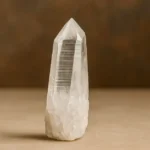Pigeon Blood Ruby is used to describe the finest quality of ruby, characterized by its intense red color with a slight bluish tint. This rare and highly sought-after gemstone is synonymous with luxury, status, and timeless beauty. Originating mainly from Myanmar (Burma), these rubies have captured the attention of collectors, jewelers, and investors worldwide.
In this comprehensive guide, we will explore the history, characteristics, rarity, valuation, and investment potential of Pigeon Blood Rubies while ensuring that the information aligns.
Table of Contents
ToggleKey Takeaways
- Pigeon Blood Ruby is the finest quality ruby, known for its intense red color with a slight bluish tint.
- Primary Source: Myanmar (Burma) produces the most sought-after Pigeon Blood Rubies, though high-quality stones are also found in Mozambique and Madagascar.
- Exceptional Value: Due to their rarity and demand, these rubies are among the most expensive gemstones, with some selling for millions per carat.
- Identification Tips: Authentic Pigeon Blood Rubies exhibit a deep red hue, strong fluorescence, and natural inclusions, and should have certification from reputable labs like GIA or SSEF.
- Investment Potential: These rubies hold strong investment value due to their scarcity and historical appreciation in price.
- Proper Care: Avoid chemicals, store them separately, and clean them gently to maintain their brilliance.
What Is a Pigeon Blood Ruby?
Pigeon Blood Ruby is often used in the gemstone industry to describe rubies with the most vivid and intense red color. Unlike regular rubies, which may have brownish or orange undertones, Pigeon Blood Rubies display a pure red hue with a slight bluish fluorescence that enhances their brilliance.
Characteristics of Pigeon Blood Ruby
Color: The most defining feature is its rich red color with a hint of blue. The stone must not have brown or orange hues.
Clarity: Although natural inclusions (silk-like rutile inclusions) are present, they should not affect the gemstone’s transparency or brightness.
Fluorescence: High-quality Pigeon Blood Rubies exhibit strong fluorescence under UV light, making them appear even more vibrant.
Hardness: Rubies rank 9 on the Mohs scale, making them second only to diamonds in durability.
Cut & Shape: These rubies are often cut into cushion, oval, or round shapes to maximize their brilliance.
Origins and Sources of Pigeon Blood Ruby
Myanmar (Burma) – The Primary Source
Myanmar (formerly Burma) is the most renowned source of Pigeon Blood Rubies, particularly from the Mogok Valley and Mong Hsu region. These areas produce the highest quality rubies that exhibit the signature deep red hue.
Other Notable Sources
While Burmese rubies are considered the gold standard, other countries also produce high-quality rubies:
- Mozambique – Some rubies from Mozambique have a color close to Pigeon Blood Ruby, though they may have different inclusions.
- Madagascar – Madagascar produces rubies with good color saturation, but they often require heat treatment.
- Thailand and Vietnam – These rubies are often darker and less fluorescent than Burmese rubies.
Why Are Pigeon Blood Rubies So Valuable?
Pigeon Blood Rubies command some of the highest prices in the gemstone market. Several factors contribute to their immense value:
- Rarity: Finding a ruby with the perfect color and clarity combination is exceptionally rare.
- Demand vs. Supply: The high demand for top-quality rubies outweighs the supply, increasing their value.
- Historical Significance: Rubies have been treasured for centuries, appearing in royal collections and historical artifacts.
- Investment Potential: Due to their rarity and increasing prices, Pigeon Blood Rubies are a strong investment asset.
- No Enhancements: The most valuable rubies are untreated and retain their natural beauty.
How to Identify a Genuine Pigeon Blood Ruby
With high value comes a risk of counterfeits. Here are key ways to identify an authentic Pigeon Blood Ruby:
Check the Color: The ruby must have a rich, intense red hue with a slight bluish tint.
Examine the Clarity: Natural inclusions should be visible under magnification but should not hinder the gem’s brilliance.
Test for Fluorescence: A strong red fluorescence under UV light is a good sign.
Lab Certification: Always ask for certificates from reputable gemological labs like GIA, SSEF, or GRS.
Heat Treatment: If a ruby is untreated, it holds significantly more value.
How Much Does a Pigeon Blood Ruby Cost?
Pigeon Blood Rubies are among the most expensive gemstones. Pricing depends on the 4 Cs (Color, Clarity, Cut, and Carat Weight).
- Small-sized rubies (1-3 carats): $10,000 – $50,000 per carat
- Medium-sized rubies (3-5 carats): $50,000 – $200,000 per carat
- Large-sized rubies (5+ carats): $300,000+ per carat, with rare pieces selling for millions.
Record-Breaking Sales
- The Sunrise Ruby: A 25.59-carat Burmese ruby sold for $30.42 million in 2015.
- The Graff Ruby: An 8.62-carat Burmese ruby sold for $8.6 million in 2014.
Investing in Pigeon Blood Rubies
Given their rarity and price appreciation, Pigeon Blood Rubies are a solid investment. Here’s why:
- Stable Value: Unlike other assets, rubies maintain and increase in value over time.
- High Demand: Global demand, especially from Asia and the Middle East, continues to rise.
- Limited Supply: Burmese mines are restricted, making these rubies even scarcer.
- Portability of Wealth: Unlike real estate or stocks, rubies are easy to store and transport.
- Hedge Against Inflation: Tangible assets like gemstones often outperform during inflation periods.
Care and Maintenance of Pigeon Blood Rubies
To maintain the beauty and value of your Pigeon Blood Ruby, follow these care tips:
- Avoid Chemicals: Keep your ruby away from harsh cleaning agents.
- Store Properly: Store separately in a soft cloth to prevent scratching.
- Clean Gently: Use a mild soap solution and a soft brush for cleaning.
- Regular Checkups: Have your ruby professionally checked and cleaned to ensure no damage occurs.
Conclusion: Should You Buy a Pigeon Blood Ruby?
Pigeon Blood Rubies represent the pinnacle of luxury, rarity, and value in the gemstone world. Whether you are a collector, investor, or simply an admirer of fine jewelry, owning one is a prestigious achievement.
If you decide to purchase a Pigeon Blood Ruby, always buy from reputable dealers, insist on proper certification, and ensure that the stone is untreated to maximize its value.
With the ever-growing appreciation for natural gemstones, a Pigeon Blood Ruby remains not only a stunning addition to any jewelry collection but also a worthwhile investment for the future.
FAQs
What makes a ruby a “Pigeon Blood Ruby”?
A Pigeon Blood Ruby must have an intense red color with a slight bluish tint, high clarity, and strong fluorescence. It should not have any brown or orange hues.
Are all Pigeon Blood Rubies from Myanmar?
While Myanmar (Burma) produces the most sought-after Pigeon Blood Rubies, high-quality rubies with similar characteristics can also be found in Mozambique and Madagascar.
How can I determine the authenticity of my ruby?
A genuine ruby will have natural inclusions, strong fluorescence under UV light, and certification from reputable gemological labs like GIA or SSEF.
Are Pigeon Blood Rubies a good investment?
Yes, due to their rarity, increasing demand, and historical appreciation in value, Pigeon Blood Rubies are considered an excellent investment.
How should I care for my Pigeon Blood Ruby?
Avoid exposure to harsh chemicals, store it separately to prevent scratches, clean it with a mild soap solution, and get it professionally checked regularly.
I’m Ashaba, a passionate and insightful individual with a deep interest in understanding the human mind, I specialize in exploring the hidden layers of thought and emotion through dream interpretation and storytelling. With a love for unraveling complex ideas, I aim to inspire others through words, offering fresh perspectives on life’s mysteries. Driven by curiosity and creativity, I seek to connect with others, whether through interpreting dreams, crafting narratives, or sharing unique insights into the subconscious mind.





